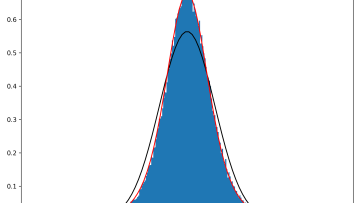subject to discrete-time noisy observations
16:30
Infinite Dyson Brownian Motion as a Gradient Flow
Abstract
The Dyson Brownian motion (DMB) is a system of interacting Brownian motions with logarithmic interaction potential, which was introduced by Freeman Dyson '62 in relation to the random matrix theory. In this talk, we discuss the case where the number of particles is infinite and show that the DBM induces a diffusion structure on the configuration space having the Bakry-Émery lower Ricci curvature bound. As an application, we show that the DBM can be realised as the unique Benamou-Brenier-type gradient flow of the Boltzmann-Shannon entropy associated with the sine_beta point process.
Gui-Qiang G. Chen is awarded the Pólya Prize for his deep research into nonlinear partial differential equations, and in particular his rigorous theoretical analysis of the equations of gas dynamics, especially those involving transonic flows.
In this case study I report on a collaboration with Mo Dick Wong (Durham University), in the area of analytic and probabilistic number theory. We studied questions on a random model for the Möbius $\mu$ function. This function is one of the most elusive functions in number theory, and encodes deep questions on primes. Let's define it properly.



